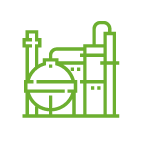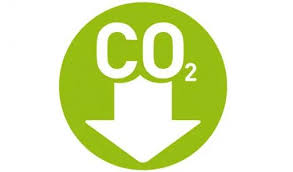
The tire shredding system consists of steel wire removal, a course shredder, a fine shredder, and fine wire separator. After the steel wire is extracted, tires are shredded into pieces smaller than 3cm, with steel content reduced to below 1%. This ensures the shredded material is ideal feedstock for our pyrolysis system.

Enrestec’s advanced pyrolysis system operates 24/7 with over 90% uptime, delivering a reliable and efficient solution for tire recycling. Developed and manufactured in Taiwan, this continuous process converts end-of-life tires into valuable resources: approximately 28 ± 2% recovered carbon black (rCB) and 38 ± 2% pyrolysis oil.
The process consists of four key stages: End-of-life tires are automatically fed into a high-temperature, oxygen-limited reactor where they break down into solids, liquids, and gases. The primary solid, crude carbon black, is separated, cooled, and treated. The gaseous byproducts are condensed into reusable pyrolysis oil, while any remaining combustible gases are used as internal fuel, minimizing the need for external energy.
In addition to continuous systems, Enrestec also offers semi-continuous batch reactor solutions capable of processing a wider range of tire sizes and waste materials, including waste oil pipes, oil sludge, and contaminated soil. This innovation overcomes the limitations of continuous systems when handling diverse feedstocks, supporting both waste reduction and carbon reduction goals.

To transform crude carbon black into eco-friendly rCB, a comprehensive treatment process is applied. This involves magnetic separation, grinding, granulation and drying procedures. Steel cords and wires are removed from the carbonized material through magnetic separation. The carbon black is then crushed, ground and granulated into various rCB forms. Each step is carefully monitored and analyzed to ensure the final rCB meets stringent environmental and quality standards.

The gases produced during pyrolysis are cooled and collected through a condensation system, resulting in crude pyrolysis oil. This oil contains carbon particles and must undergo further refining, including precipitation, filtration and sludge treatment, to ensure consistent product quality. Once purified to meet strict control standards, the refined pyrolysis oil becomes the final product.

The utility system includes a cooling tower, air compressor, pyrolysis oil storage tanks, waste heat recovery equipment, wastewater treatment, and waste gas treatment units. The system design can be customized to meet the needs of different installation sites. Additionally, recovered waste heat can be used in a recovery boiler to generate steam, maximizing energy efficiency.



